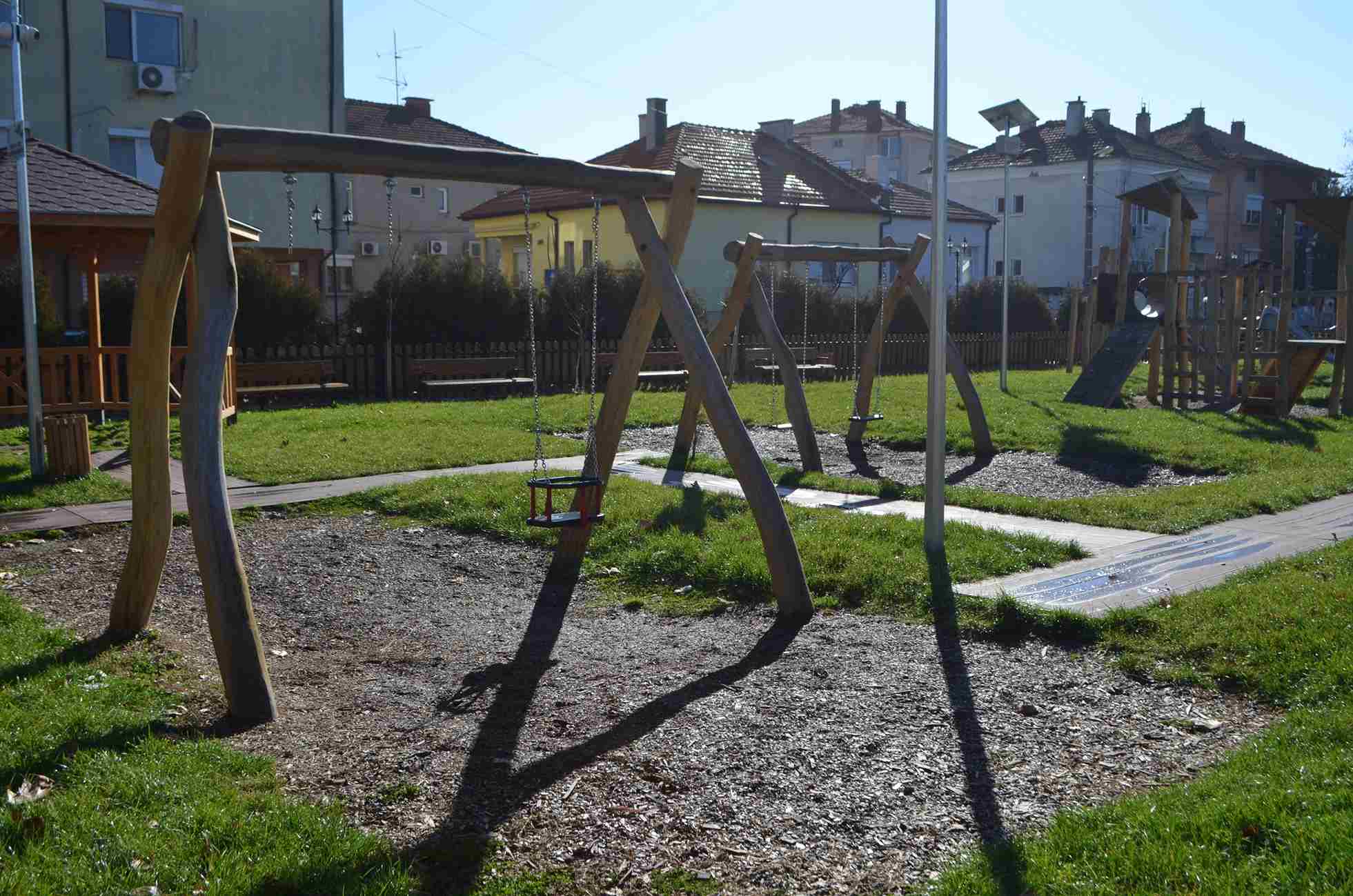Thessaloniki gets ready for its metro launch in November
The underground rapid transit lines have been under construction for almost two decades due to various project delays
 TheMayor.EU logo
TheMayor.EU logo It serves as a staging area for local authorities and their campaign to promote biodiversity in the urban environment
Recently, local authorities in the Bulgarian town of Svilengrad unveiled a new playground for children, built in a dry river bed, which runs through one of the neighbourhoods. The playground and park were built where the river Kanaliyka used to flow, as a tributary of the larger Maritsa.
Apart from making use of the new space, the playground was constructed with wood and features grass and mulch.
The project was funded through INTERREG, the EU’s cross-border cooperation fund for Bulgaria and Greece in the period 2014-2020. It is titled ‘Green urban territories – better place to live’ and features ecological training for agricultural workers, introducing sustainable mobility and bio-diversity concepts.
In fact, according to local officials, biodiversity is exactly the rationale behind the playground, as creating the new biomes of mulch and grass can attract multiple species that would not have been able to thrive in a dry river bed.
As the Bulgarian News Agency reports, the project contributed a total of 1,4 million euros, with around 542,000 going towards the municipal budget in Svilengrad.
The Green urban territories project in Svilengrad included a host of measures, centred around the idea of promoting biodiversity and better urban ecosystems. Additionally, it aimed to introduce modes of electric transportation and increase green area coverage.
The biggest initiative for Svilengrad was the park, which features two eco-areas: one designated for kids under 6 years old and the other – for those under 12. All the playground furniture is made from wood and the cushion layer is a patchwork of grass and wooden mulch, making for a better ecological alternative compared to commercial counterparts.

The municipality has greened a large area of around 5 acres, which now includes trees, shrubs and flowers, as well as a long row of birdhouses. Moreover, streetlights around the park are powered by photovoltaic panels.
As part of the project, local officials can make use of two electric scooters, which will be used during work hours, as a form of sustainable transport in the urban environment. Additionally, the city held a pesticide training for people working in agriculture to show them how to protect biodiversity.

The underground rapid transit lines have been under construction for almost two decades due to various project delays

Now you can get your wine in Talence by paying directly in Bitcoin

That’s because the state has to spend money on updating the railway infrastructure rather than subsidizing the cost of the popular pass

Rethinking renewable energy sources for the urban landscape

The examples, compiled by Beyond Fossil Fuels, can inform and inspire communities and entrepreneurs that still feel trepidation at the prospect of energy transition

Now you can get your wine in Talence by paying directly in Bitcoin

The 10th European Conference on Sustainable Cities and Towns (ESCT) sets the stage for stronger cooperation between the EU, national and local level to fast track Europe's transition to climate neutrality.

At least, that’s the promise made by the mayor of Paris, Anne Hidalgo

The underground rapid transit lines have been under construction for almost two decades due to various project delays

At least, that’s the promise made by the mayor of Paris, Anne Hidalgo

Hostal de Pinós is located in the geographical centre of the autonomous region

Despite its church-y name, the district has long been known as the hangout spot for the artsy crowds

Urban dwellers across the EU are having a say in making their surroundings friendlier to people and the environment.

Forests in the EU can help green the European construction industry and bolster a continent-wide push for architectural improvements.

Apply by 10 November and do your part for the transformation of European public spaces

An interview with the Mayor of a Polish city that seeks to reinvent itself

An interview with the newly elected ICLEI President and Mayor of Malmö

A conversation with the Mayor of Lisbon about the spirit and dimensions of innovation present in the Portuguese capital














